Wildflowers in Central Australia
Wildflowers of Central Australia | Non-Indigenous Flowering Plants in Central Australia
When there is massed flowering in Central Australia it is a sight to behold and the wildflower season in Australia is a spectacular affair. Whilst some regions, such as along Australia’s coastlines, can almost assure an annual display of wildflowers, much of Australia’s arid region rely on seasonal rain.
Nowhere is the idea and visual spectacle of wildflowers more astonishing than in the desert region. A region where good seasonal rainfall can transform the outback in a mass of colour, created by thousands of flowering plants. These ephemeral plants are keyed to respond quick to any good rainfall, by growing, flowering and producing seeds. Together with many shrubs and trees, it is a spectacle worth seeing.
Massed flowering of this nature usually lasts only a couple of months at the most, occurring mainly in winter in the northern parts or in spring for the southern parts of Australia.
Annual Yellowtop (Senecio gregorii)
Massed flowering can be witnessed throughout Central Australia, especially in the Alice Springs region. With the significant rain, the Annual Yellowtop can be seen as scattered flora among the many other flowering plants, or on mass, bobbing their heads in the wind, on either side the the roadways and on red desert sand. The following images of massed flowering of Yellowtops were seen south of Alice Springs, at the Ilparpa Claypans.
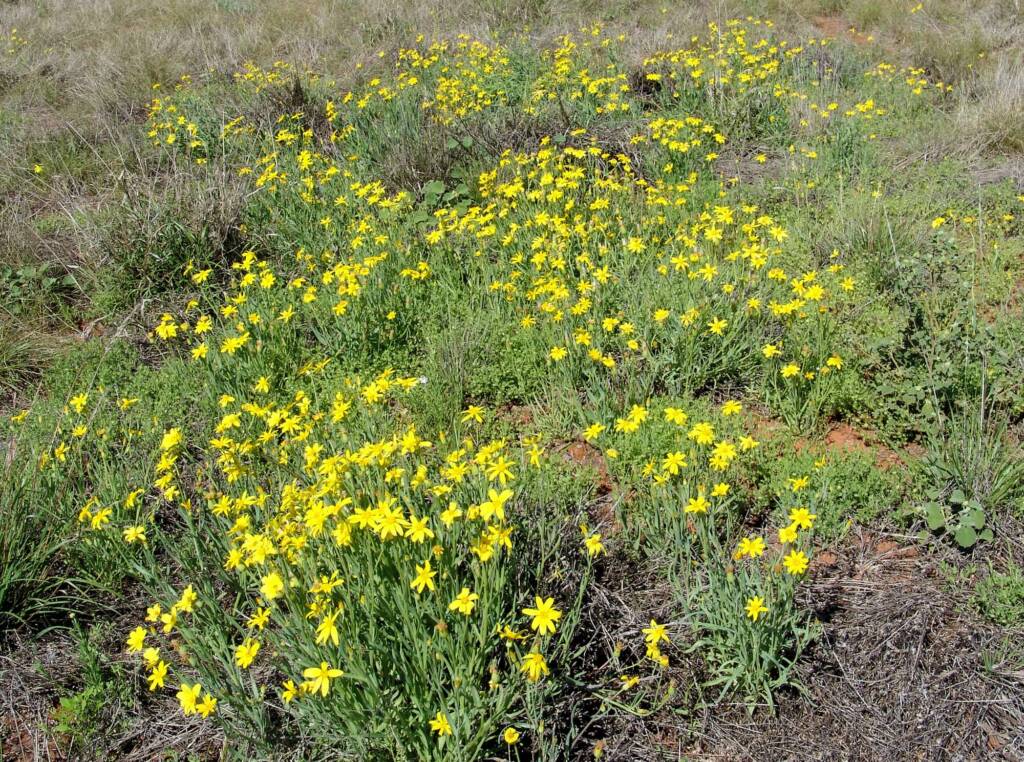
Mass flowering Annual Yellowtop (Senecio gregorii), Central Australia 
Mass flowering Annual Yellowtop (Senecio gregorii), Central Australia 
Mass flowering Annual Yellowtop (Senecio gregorii), Central Australia 
Mass flowering Annual Yellowtop (Senecio gregorii), Central Australia 
Mass flowering Annual Yellowtop (Senecio gregorii), Central Australia
Georges Indigo (Indigofera georgei)
It is a sight to behold when you see a mass flowering of the low growing shrub, Georges Indigo (Indigofera georgei). Seen flowering between May to September, with flower spikes measuring in length of up to 25 cm and varying in colour through pink, lilac, red or purple. Occurs in the Pilbara, Carnarvon, Gascoyne, Little Sandy Desert, Gibson Desert, Central Ranges, Yalgoo, Murchison, Central Australia and Great Victorian Desert regions.

Georges Indigo (Indigofera georgei) 
Georges Indigo (Indigofera georgei) 
Georges Indigo (Indigofera georgei) 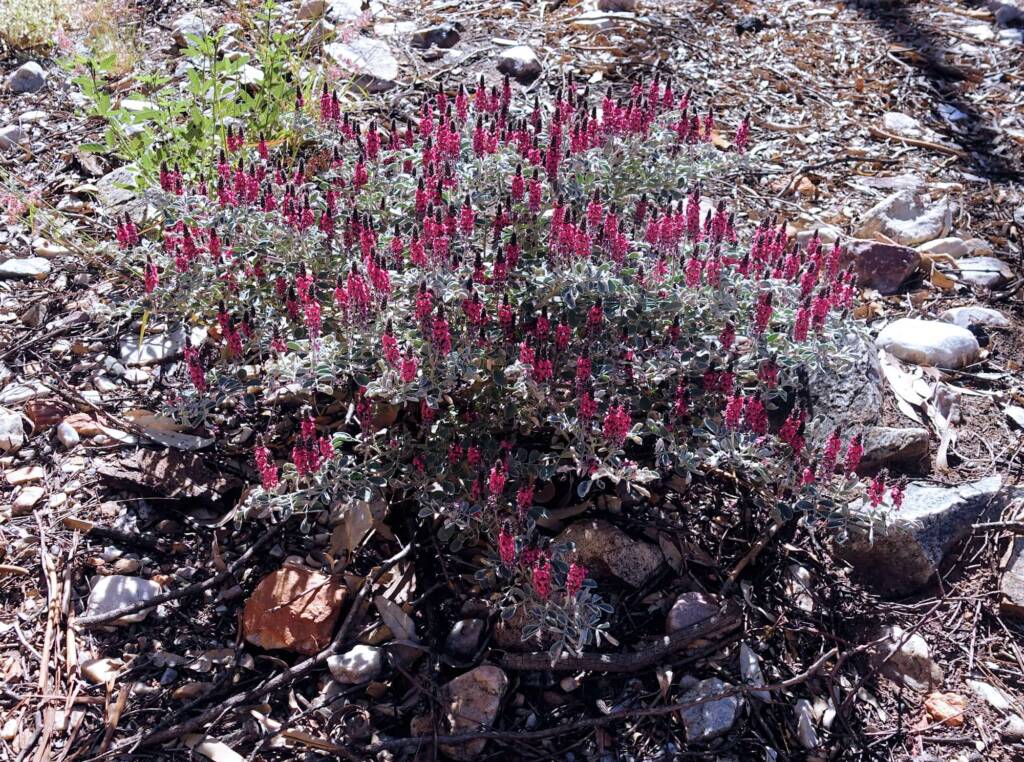
Georges Indigo (Indigofera georgei)
Hairy Mulla Mulla (Ptilotus helipteroides)
The Hairy Mulla Mulla (Ptilotus helipteroides) is a purple-red or deep pink to lilac pussytail, appearing as a globular shape and a tuft at the top, then elongating slightly. The flower appears on a long stem, well above the leaves.
It is an annual with several erect stems. found gro growing on stony ground, low slopes to red sand, this is an ephemeral herb that appears after rain. Amazing to see across the landscape in a mass flowering event.
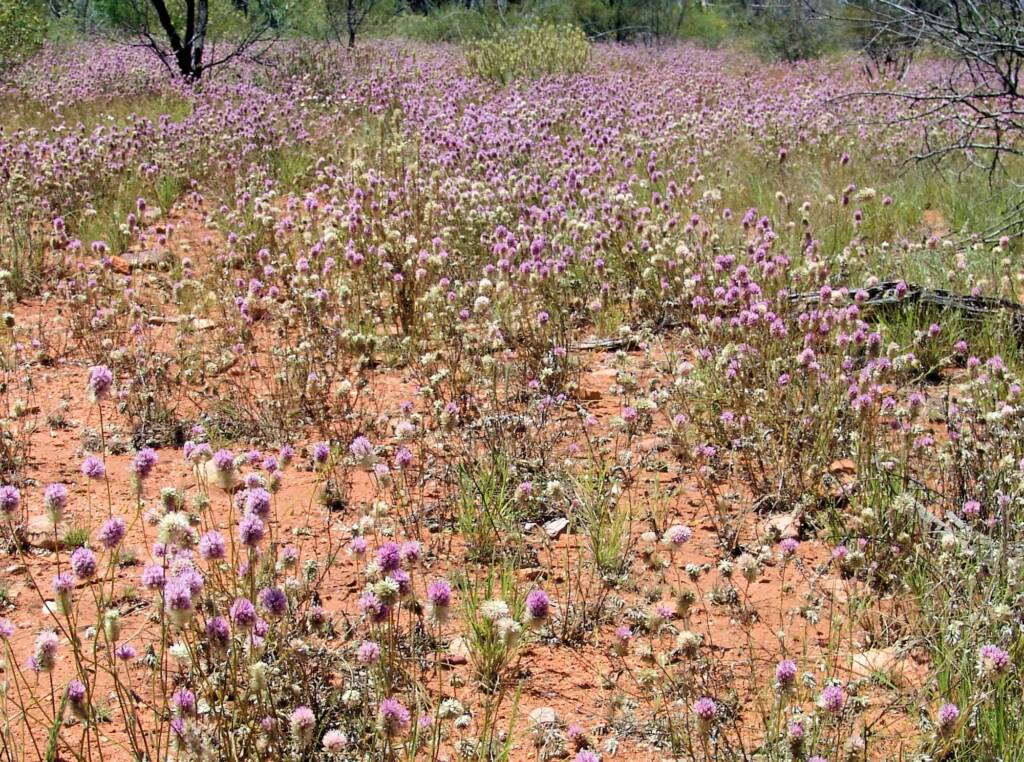
Mass flowering of Hairy Mulla Mulla (Ptilotus helipteroides) 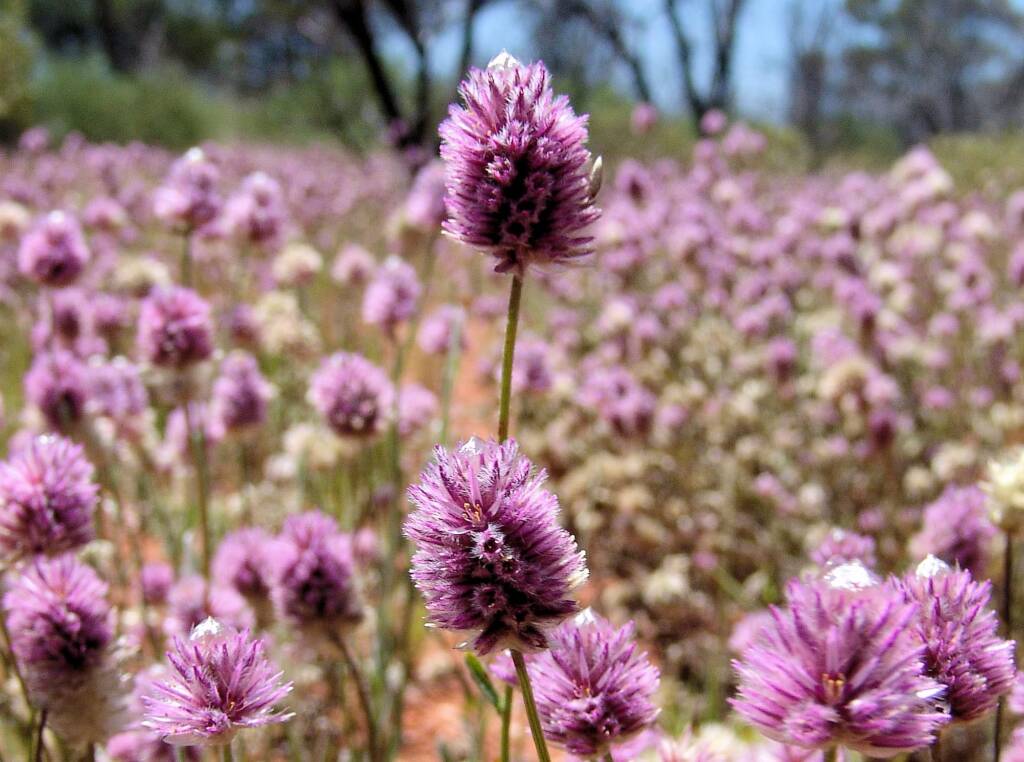
Mass flowering of Hairy Mulla Mulla (Ptilotus helipteroides) 
Mass flowering of Hairy Mulla Mulla (Ptilotus helipteroides) 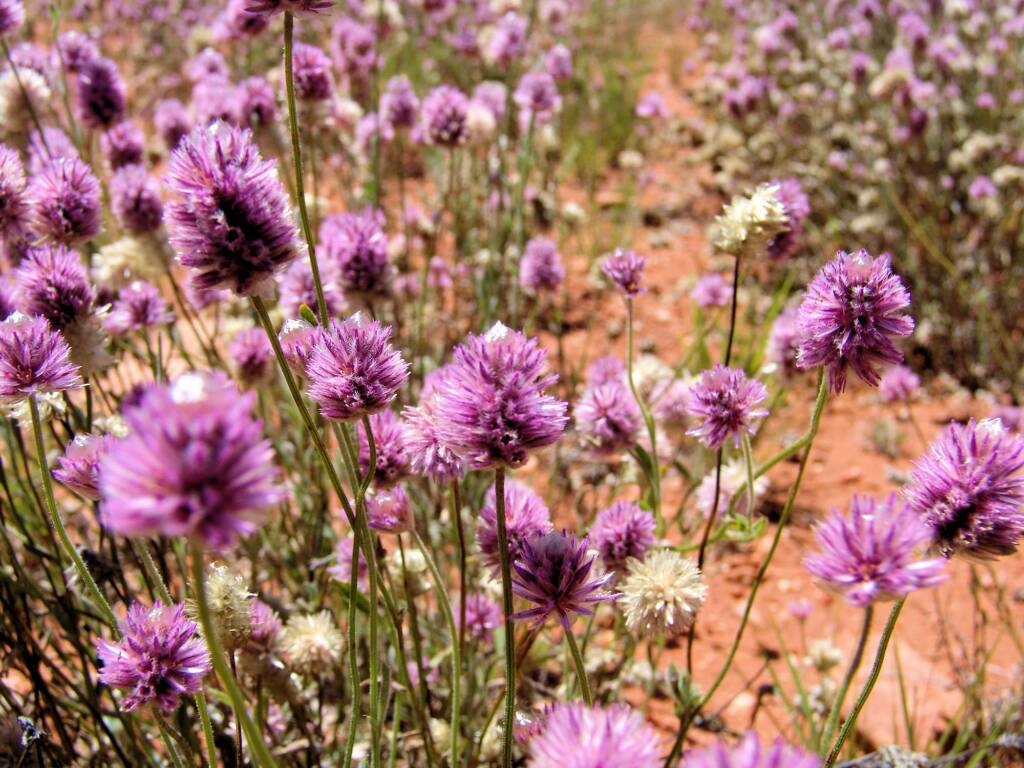
Mass flowering of Hairy Mulla Mulla (Ptilotus helipteroides) 
Mass flowering of Hairy Mulla Mulla (Ptilotus helipteroides) 
Mass flowering of Hairy Mulla Mulla (Ptilotus helipteroides) 
Mass flowering of Hairy Mulla Mulla (Ptilotus helipteroides) 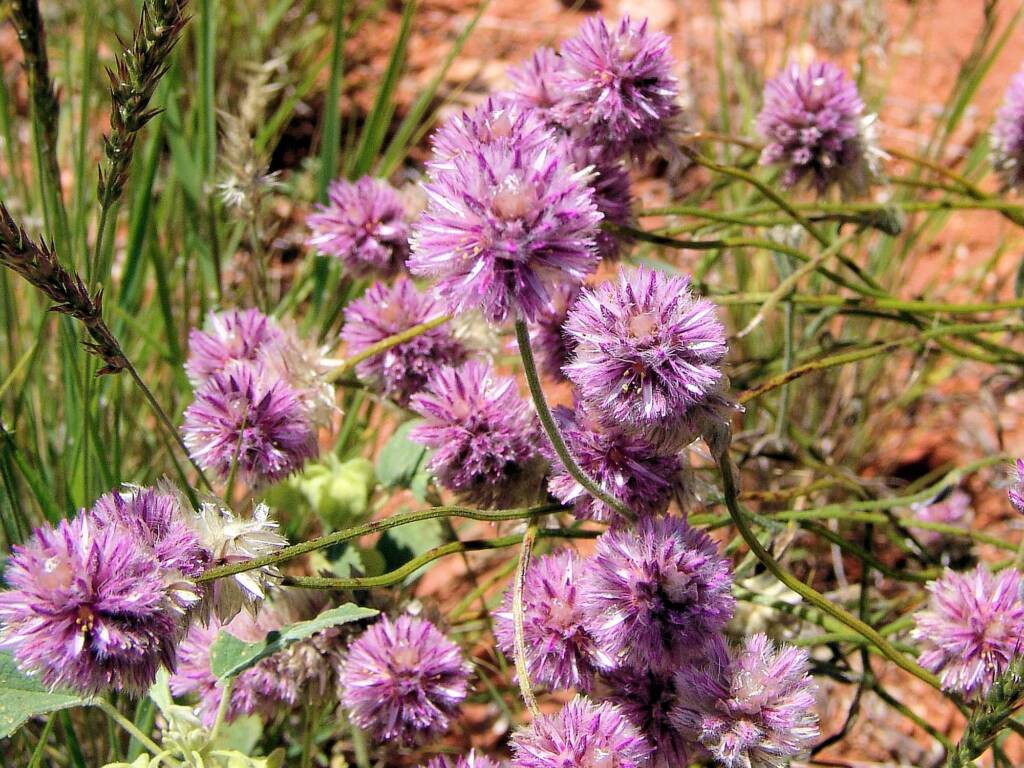
Mass flowering of Hairy Mulla Mulla (Ptilotus helipteroides) 
Mass flowering of Hairy Mulla Mulla (Ptilotus helipteroides)
Longtail (Ptilotus polystachyus)
The Longtails (Ptilotus polystachyus) are an erect, sometimes sprawling herb characterised by its flower spikes, that start off short and extend into a long narrow cylinder shape. The spikes are usually pale green-yellow in colour, straw-coloured (the perianth tips sometimes has a reddish-tinged) when fully developed, later turning brownish. There is also a red-brown form known locally as the Red Pussytail.

Longtails (Ptilotus polystachyus), Owen Springs, NT 
Longtails (Ptilotus polystachyus), Owen Springs, NT 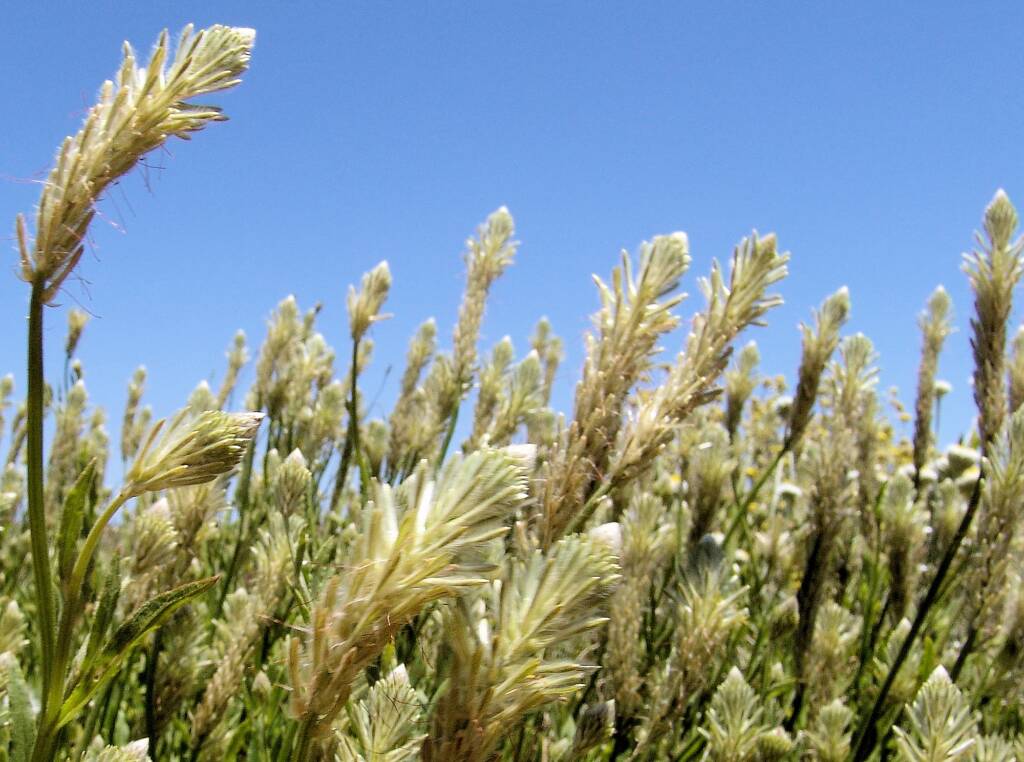
Longtails (Ptilotus polystachyus), Owen Springs, NT 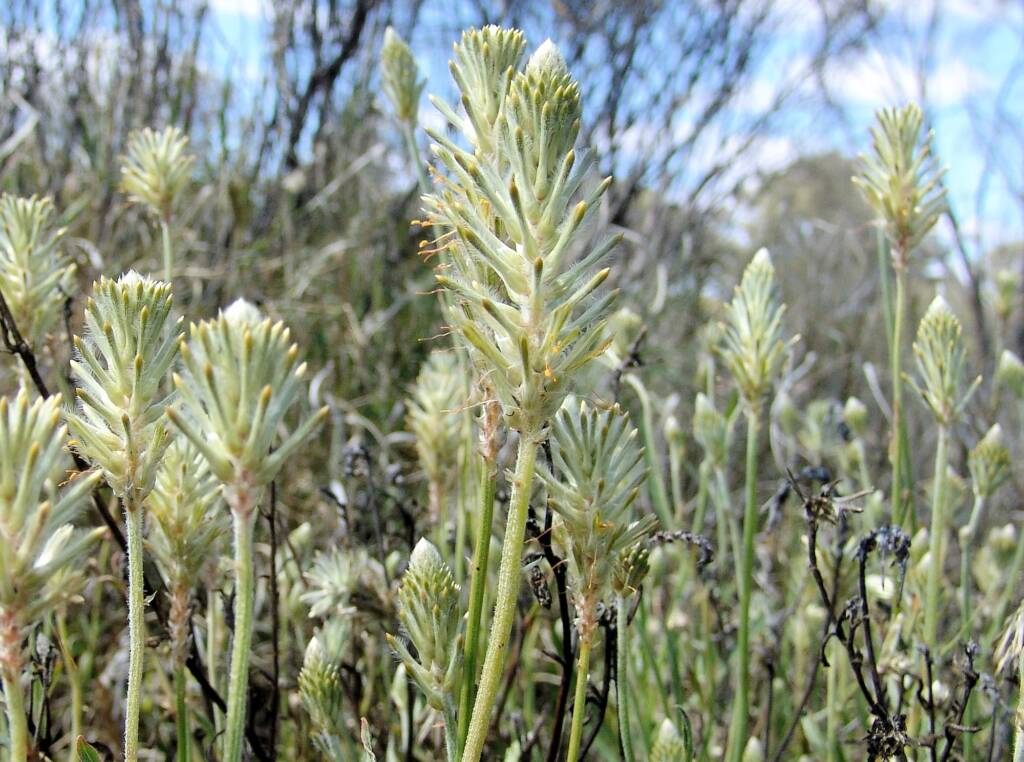
Longtails (Ptilotus polystachyus) 
Red Pussytail (Ptilotus polystachyus), Owens Springs, NT 
Red Pussytail (Ptilotus polystachyus), Owens Springs, NT 
Red Pussytail (Ptilotus polystachyus), Owens Springs, NT 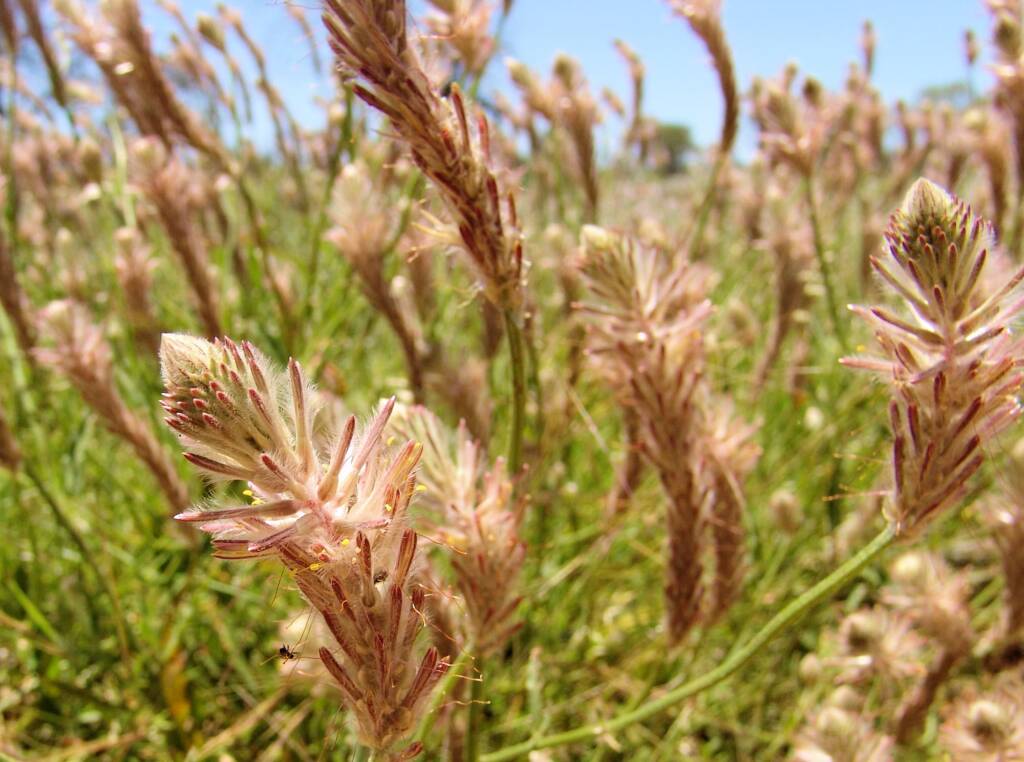
Red Pussytail (Ptilotus polystachyus), Owens Springs, NT
Parrot Pea (Crotalaria cunninghamii)
When we walked up and across the sandhills on the Binns Track, and came to the top of the dune, we saw a mass of Parrot Pea growing across the sand hills… amazing.
It is found growing in spinifex, sandplains and sand hill / sand dune country. Also known as the Green Bird Flower, among other common names.

Green Bird Flower (Crotalaria cunninghamii), Binns Track 
Green Bird Flower (Crotalaria cunninghamii), Binns Track 
Green Bird Flower (Crotalaria cunninghamii), Binns Track 
Green Bird Flower (Crotalaria cunninghamii), Binns Track 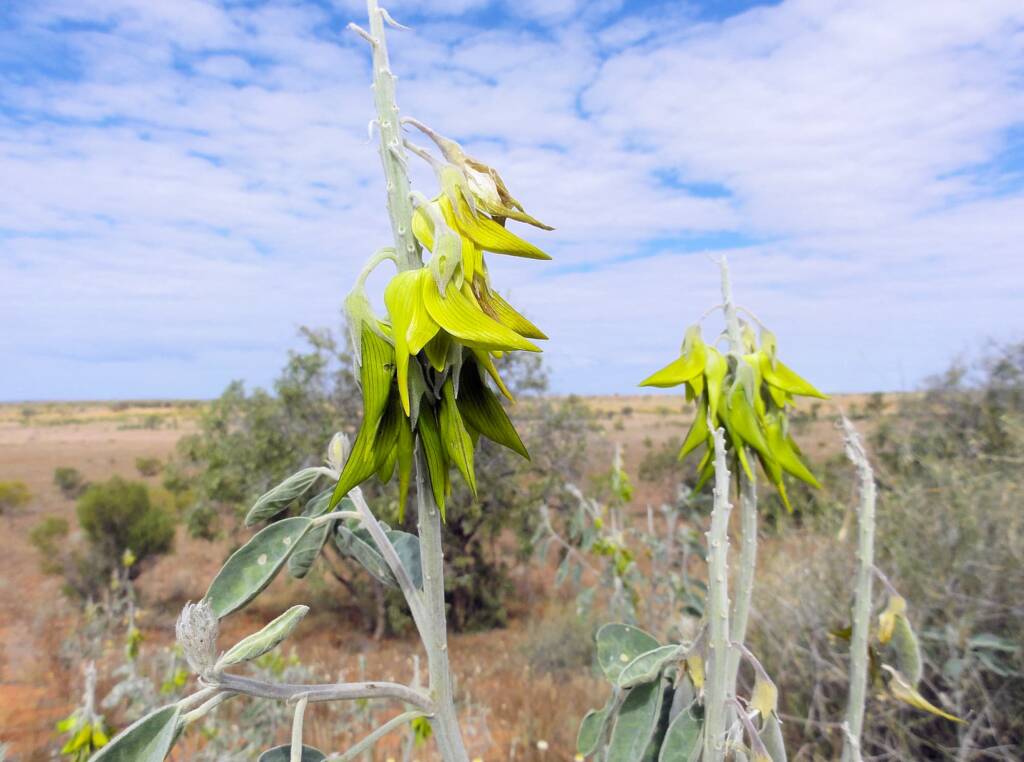
Green Bird Flower (Crotalaria cunninghamii), Binns Track 
Green Bird Flower (Crotalaria cunninghamii), Binns Track 
Green Bird Flower (Crotalaria cunninghamii), Binns Track
Poached Egg Daisy (Polycalymma stuartii)
The apply named Poached Egg Daisy (Polycalymma stuartii) is an annual that grows up to 50 cm high, has hairy stems with a single flower and with leaves on the lower part of the stem.
This species is common on sandplains and dunes in the Central Australia region, extending into outback New South Wales, and northern parts of Victoria. Can often be seen on mass and growing among other mass flowering events.

Poached Egg Daisy (Polycalymma stuartii), Owen Springs, NT 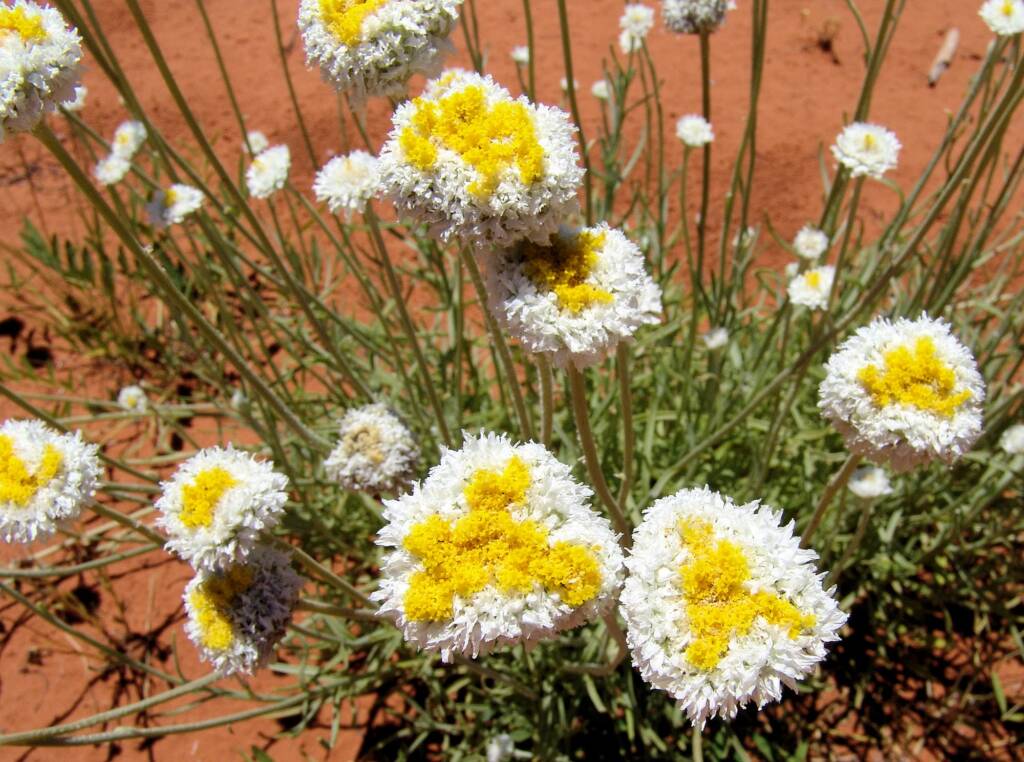
Poached Egg Daisy (Polycalymma stuartii), Owen Springs, NT 
Poached Egg Daisy (Polycalymma stuartii), Owen Springs, NT 
Poached Egg Daisy (Polycalymma stuartii), Owen Springs, NT
More to come…
